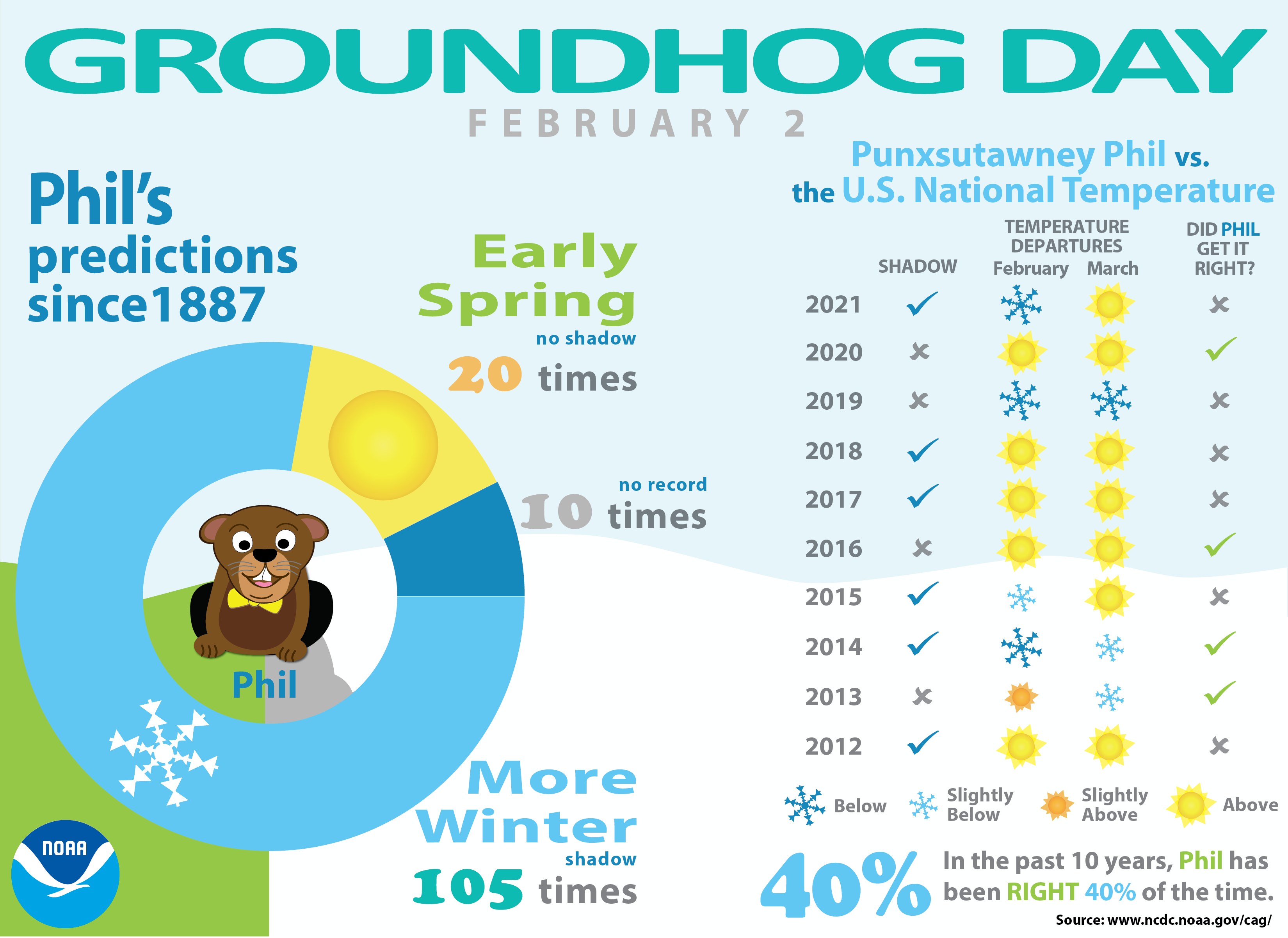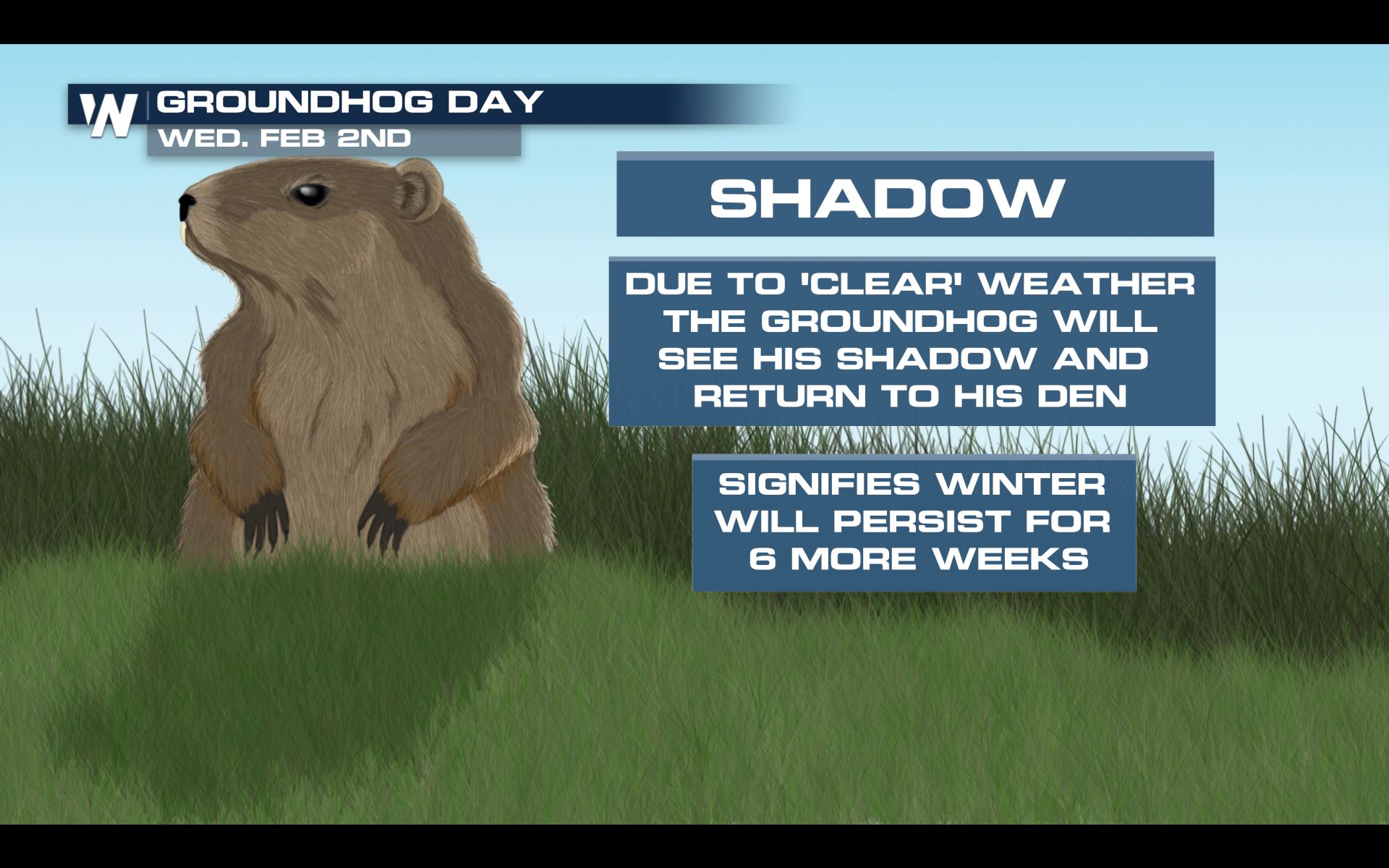[Written from NOAA NCEI] At Gobbler’s Knob in Punxsutawney, Pennsylvania early Wednesday morning, the nation’s most famous groundhog Punxsutawney Phil saw his shadow, meaning six more weeks of winter, accordingly to longstanding folklore.
Every February 2, a crowd of thousands gathers at Gobbler’s Knob to await Phil’s special forecast. If the 20-pound groundhog emerges and sees his shadow, the United States can expect six more weeks of winter weather, according to legend. But, if Phil doesn’t see his shadow, we can expect warmer temperatures and the arrival of an early spring.
Even though he’s been forecasting since 1887, Phil’s track record for the entire country isn’t perfect. To determine just how accurate he is, we’ve compared U.S. national temperatures with Phil’s forecasts. On average, Phil has gotten it right 40% of the time over the past 10 years.
Phil’s 2021 Forecast
In 2021, Phil forecast a “long winter” when he saw his shadow and predicted an additional six weeks of wintry temperatures. In fact, the contiguous United States saw below average temperatures in February and above average temperatures in March of last year. Phil was 50/50 on his forecast.

[Image from NOAA via iStock]
The average contiguous U.S. temperature during February 2021 was 30.6°F. It was 3.2°F below the 20th century average. 2021 experienced the coldest February since 1989 and the 19th-coldest February in the 126-year period of record.
February 2021 was much cooler than average across the contiguous U.S.. Cold air across the central U.S. in mid-February brought frigid temperatures, snow, and ice to the northern Plains, down to southern Texas. Six states ranked it among their 10-coldest Februaries on record, and it was the 11th-coldest February for Texas and Illinois. Meanwhile, with an average temperature of 0.9°F, 3.9°F below the long-term average, Alaska had its coldest February in 22 years.
March 2021 was warm in the contiguous U.S. The average temperature was 45.5°F, 4.0°F above the 20th-century average. Temperatures were above average in the Northwest, near the Great Lakes, the Gulf of Mexico, and into the Northeast. March temperatures for North Dakota were ranked fourth warmest on record. Conversely, Alaska had its coldest March since 2017, with a statewide average temperature of 9.0°F, which is 1.8°F below average.

[Image from NOAA via iStock]
Phil’s First Forecast
In 1887, when he made his debut as the official groundhog forecaster for the entire country, Phil saw his shadow. His first prediction of six more weeks of winter was accurate for a few regions, but it came up short for several others.
According to the February 1887 Monthly Weather Review, the Northeast, Great Lakes region, and West saw temperatures well below normal. The Southeast and Gulf states saw temperatures well above normal during the month. And, according to the March 1887 Monthly Weather Review, the Northeast, Great Lakes region, Ohio Valley, and Southeast saw temperatures well below normal. Areas west of the Mississippi River valley saw temperatures above normal.

As Phil surely knows, accurate seasonal forecasting is hard work. Predicting the arrival of spring for an entire country, especially one with such varied regional climates as the United States, isn’t easy! The above graphic show’s Phil’s accuracy rate at about 40% over the last decade. More of Phil’s past predictions are also available from the Punxsutawney Groundhog Club.
Edited for WeatherNation by Mace Michaels
